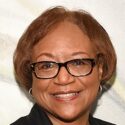 A new report from the U.S. Census Bureau examines racial and ethnic differences in the types of families in which children live and who takes care of them.
A new report from the U.S. Census Bureau examines racial and ethnic differences in the types of families in which children live and who takes care of them.
The number and type of parents with whom children live, along with their parents’ relationship status, is often associated with child development and the household’s economic wellbeing. Living arrangements of children are not experienced equally, as various factors — including parental death, divorce, remarriage, births to unmarried mothers, cohabitation of unmarried parents, and multigenerational families — can influence children’s living arrangements. Today, 40 percent of births are to unmarried mothers, and these children may grow up in one-parent families or spend significant portions of their lives with other relatives or stepparents.
As result, living arrangements can impact a child’s education. Single parents may have less opportunity to read to their children, attend school functions, or offer help with homework. Single-parent families tend to have lower incomes and as a result may be less able to afford educational resources including books, home computers, or tutoring services.
In 2019, 75.1 percent of all non-Hispanic White children lived with two married parents. For Black children, only 37.7 percent lived with married parents. About 4 percent of all Black and White children lived with two unmarried parents.
More than 45 percent of Black children lived in single-parent households headed by a woman. For non-Hispanic White children, 14 percent lived in a single-parent household headed by their mother. Slightly more than 5 percent of all Black children lived in single-parent families headed by their father. This was slightly higher than the rate for White children.
More than 15 percent of Black children lived in multi-generational families where grandparents or great-grandparents also were part of the household. This was about twice the rate for non-Hispanic White children.
The full report: Living Arrangements of Children, may be downloaded here.












